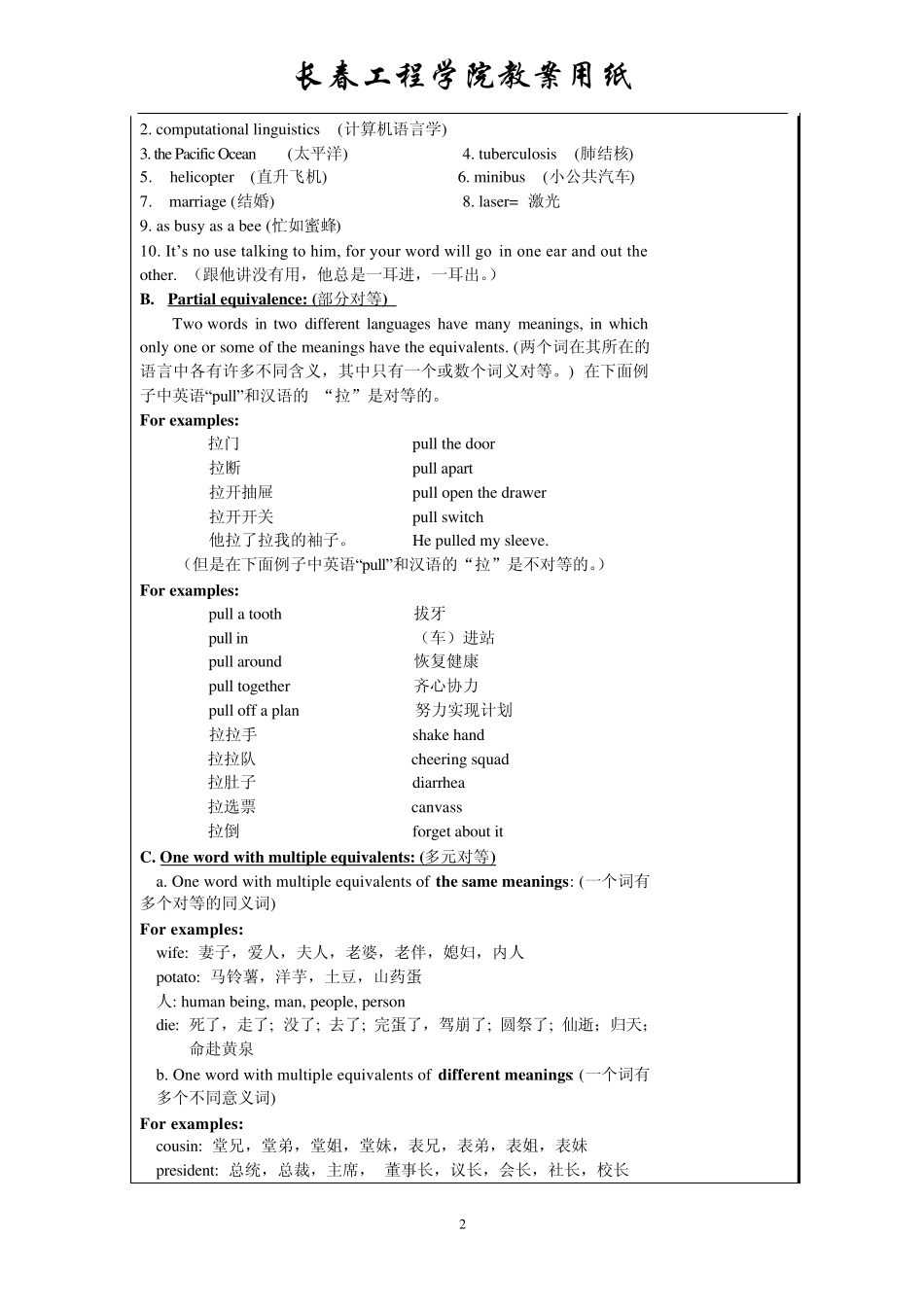长春工程学院教案用纸 1 教 学 内 容 教 法 提 示 Translation and Equivalence I. Teaching Contents: a. Word equivalence b. Form equivalence c. Dynamic equivalence d. Meaning equivalence e. Style equivalence II. Teaching Aims: To make students know about the relationship between translation and equivalence. III. Teaching Focus: The importance of equivalence IV. Teaching Methods: Student-centered (group work, then class work). V. Teaching Approaches: Multi-media aided. VI. Teaching Procedures: Step 1 Comments on the assignment given to students in last period. Step 2 Group discussion about equivalence. 1. What is equivalence? Equivalence refers to the description of one thing in different languages. In fact translation is about equivalence. (不同语言用来表达同一事物的词叫对等词.) 2. How many kinds of equivalence do you know? What are they? There are the following kinds of equivalence: I. Word equivalence: If we just consider it in terms of words, we can divide it into the following kinds. A. Complete equivalence: It refers to the case in which two words or phrases in different languages have exactly the same meaning. For examples: 1. the U.S. State Department (美国国务院) Chapter Three 长春工程学院教案用纸 2 2. computational linguistics (计算机语言学) 3. the Pacific Ocean (太平洋) 4. tuberculosis (肺结核) 5. helicopter (直升飞机) 6. minibus (小公共汽车) 7. marriage (结婚) 8. laser= 激光 9. as busy as a bee (忙如蜜蜂) 10. It’s no use talking to him, for your word will go in one ear and out the other. (跟他讲没有用,他总是一耳进,一耳出。) B. Partial equivalence: (部分对等) Two words in two different languages have many meanings, in which only one or some of the meanings have the equivalents. (两个词在其所在的语言...


